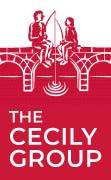
Do we see risk as a threat to avoid, a necessary evil, or something to embrace? And how does this perspective shape the way families support entrepreneurial ventures or personal growth within their own ranks?
Two of my favourite books on leadership and decision-making under pressure are To Risk It All by Admiral James Stavridis and Risk: A User’s Guide by General Stanley McChrystal. Both books explore how risk, luck, and bold decision-making play out in high-stakes environments. They made me reflect on how families, particularly Family Councils, approach risk.
What Is Risk, Really?
In Risk: A User’s Guide, McChrystal defines risk as:
Risk = Threat × Vulnerability
This definition moves us away from thinking of risk as something abstract or inherently negative. It shows us that risk is dynamic—it’s about how vulnerable we are to a threat, not just the threat itself.
And while we can’t know or control all possible threats (Rumsfeld’s “unknown unknowns” come to mind), we can assess and reduce our vulnerability. That’s where we can focus our energy.
Reframing Risk for Families
Think of risk not as something to fear, but as something to manage. You might not control the threat, but you can reduce your vulnerability to it. That shift in thinking is particularly helpful for families navigating decisions that involve both emotional and financial stakes.
For example, wealthier families often feel more comfortable taking on high-risk investments—not because the threats are smaller, but because they are less vulnerable to loss. They can absorb failure without it being devastating.
What Is Failure Resilience?
This brings us to the heart of the matter: failure resilience. It’s not enough to assess risk once and move on. Risk is ongoing. And when something goes wrong—as it inevitably will at times—families must decide whether to try again or walk away.
So, let’s build on the original formula:
Ongoing Risk Exposure = Threat × Vulnerability × Failure Resilience
Failure resilience reflects your willingness to keep engaging with a risk after setbacks. It’s the opposite of “one and done.” It means failure doesn’t end the journey—it shapes the next step.
Why Failure Resilience Matters in Family Councils
Without failure resilience, the cost of failure feels absolute. One setback, and the project (or person) is dropped. That kind of environment kills initiative. Why would anyone take a chance if the consequence of failure is shame or rejection?
On the other hand, if families create space to fail and try again, they encourage learning, courage, and long-term growth. Of course, this doesn’t mean throwing good money after bad. Resilience must be managed and adjusted as a project progresses.
Think in phases. Early-stage ideas (like MVP development) carry different risks than later-stage ventures (like market launch). Set different expectations for each phase. The more clearly everyone understands the stakes, the better they can support each other through them.
How to Build a Failure-Resilient Family Council
A failure-resilient Family Council is proactive, not reactive. Here are some practices that can help:
- Plan for risk in stages: Break large initiatives into smaller phases. Define what success and failure look like at each stage.
- Talk openly about threats and vulnerabilities: Encourage entrepreneurs to share what they see—and share your perspective too.
- Set clear expectations for failure resilience: Agree in advance on how many setbacks are acceptable before reevaluating. “When is enough, enough?”
- Draft an exit strategy: Think about what happens if things go well and if they don’t. Make sure everyone knows the plan either way.
- Track and share progress regularly: Keep communication open, especially with the wider family, to avoid misunderstandings.
- Offer more than just money: Your network, experience, and support can be just as valuable as funding. Use all the tools available.
- Treat it as a learning experience—for everyone: If this is a new approach for your Family Council, be transparent. You’re all learning together.
A Common Pitfall to Avoid
Too often, families give young members a cheque and a “good luck!” with no real plan, mentorship, or follow-up. When the money disappears and the project stalls, the result is embarrassment, disappointment, and loss of confidence.
But that failure wasn’t just theirs—it was shared. With a better approach to risk and resilience, the outcome might have been different.
Conclusion
By breaking down risk into threat, vulnerability, and failure resilience, families can approach decision-making with more clarity. This mindset helps Family Councils support entrepreneurship and innovation without fear of rupture when things don’t go perfectly. Done well, this approach allows families to take smart risks, recover from failure, and grow stronger together.
